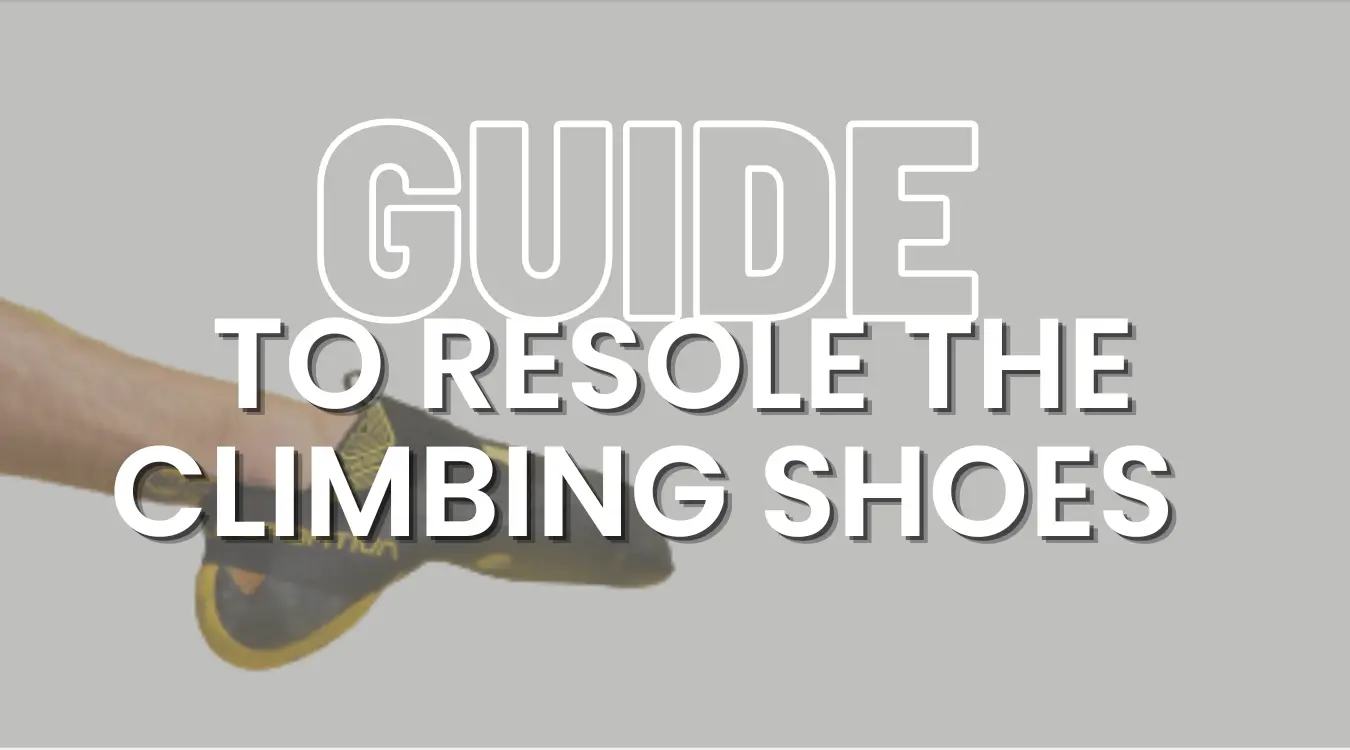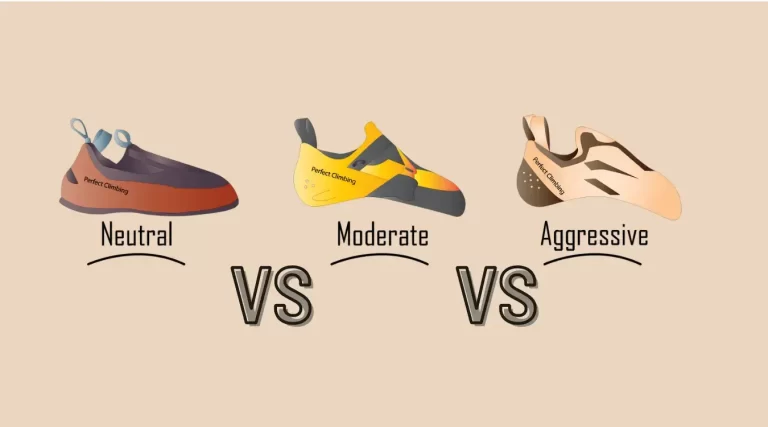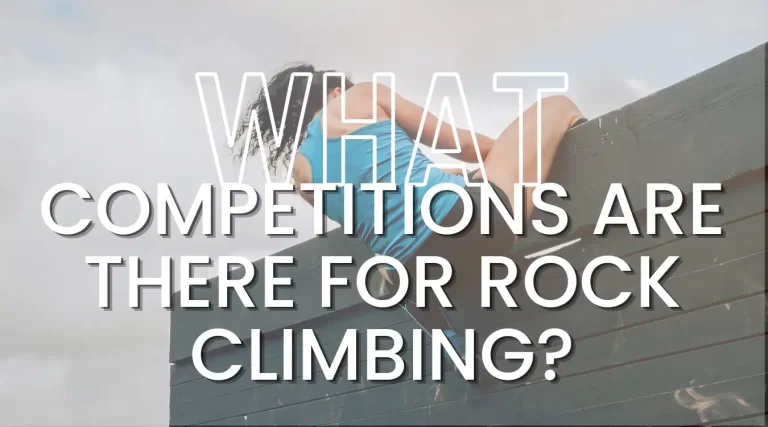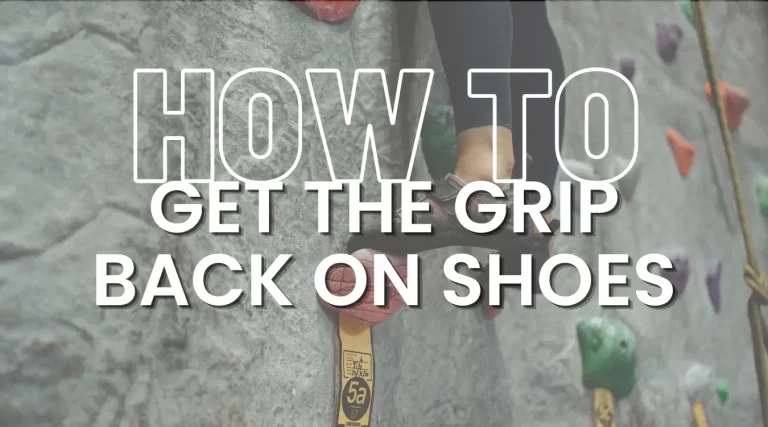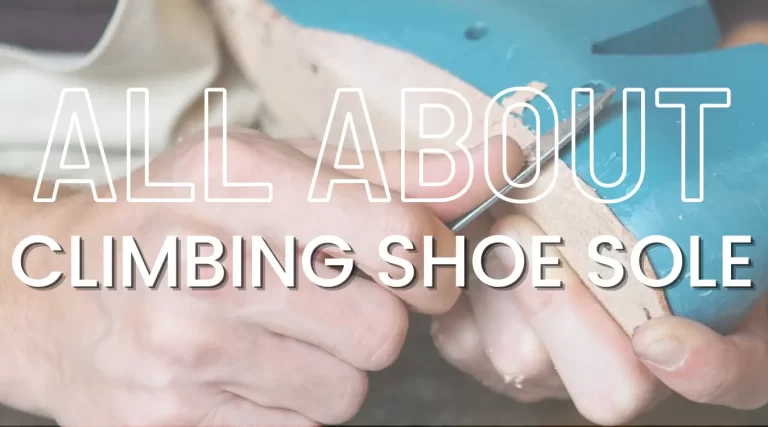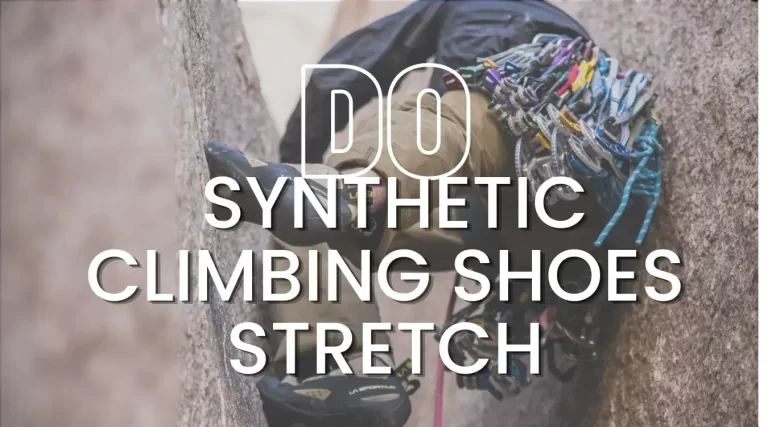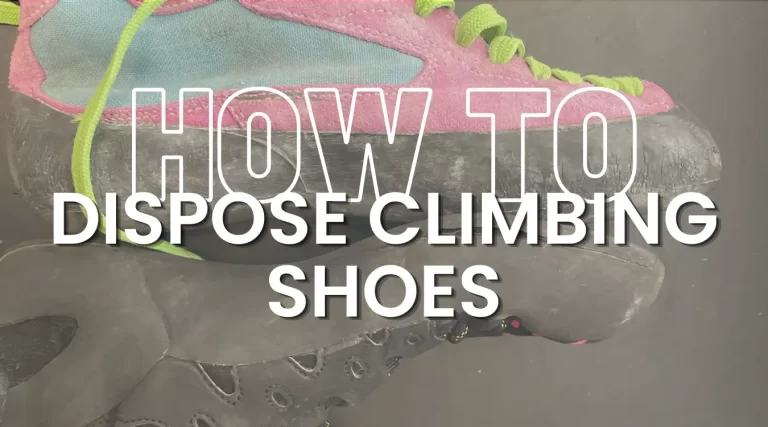Climbing shoes are costly, but a good and older pair can stay for years of benefit. Climbing shoes can be resoled to expand their stamina and enhance performance. The resole procedure applies to removing the worn out soles, cutting away the old soft rubber, heating the new softer rubber to the proper temperature, and then gluing it in place.
The process is a bit more complicated than replacing the rubber, but it gets all the crud out of a pair of shoes. Resoling your shoes is also a good excuse to buy new pair of socks: most new climbing shoes shops sell rubber-soled socks worn over regular socks to give better traction.
You can probably resole your climbing shoes yourself, but it’s best to consult an experienced shoe shop before attempting it yourself.
The Excellence Of Climbing Shoes
The Climbing Shoes are specially designed to cling to the rock. Their rubber tread creates friction and causes the shoes to grind against the rock, which grips the shoe. Climbing shoes, especially hiking shoes, are made to be sticky. The sticky rubber they use is what makes the shoe stick to rock. The less rubber you leave on rock, the less grip you’ll have. So, the less you climb, the less sticky your shoes will be.
Worn shoes are a critical problem for all climbers, especially because climbing can be a very physical activity. In addition to losing your grip, your foot and shin can become painful. You should replace climbing shoes yearly, but even if worn shoes are not replaced, they can still be used for climbing, but there will be limitations.
Parts of the rock climbing shoes
- The Sole
- The Rand
- The Upper
The sole
The sole is the rubber space found about the shoe’s base and flanks, permitting you to attach to surfaces sufficiently. The Rand is the part of the shoe that goes around the toe and extends to the part of the shoe that covers the arch. The top of the foot and the anke are covered by the upper of the shoe.
The Rand
The Rand is a thin rubber coating that is between the sole and upper of the shoe, covering near the toes and sides. Its goal is to cover the fabric of the upper. Although the Rand is not as revealed as the sole, this place can always produce injury.
The upper
Found on the top of the shoe is the upper which can be made of natural or synthetic leather. This piece carries everything jointly, and if there is notable damage to them, replace climbing shoes as they might not be repairable. Of course, it is forever attainable to locate a substitute that fits.
Climbing shoes should have soles that stay pliable and flexible throughout their lifespan. The bottom of the shoe should also have some grip on the surface you are climbing on. Most shoes are reliable, but time and average usage will determine whether the soles are worth it.
Information about Resole Climbing Shoes Process
The climbing shoe can face two types of resoling irritation.
- Sole repair(resole)
- Rand repairs
- 1/3 resole
- complete resole
- half resole
Resole: Caused by wearing down of rubber in an area of the shoe. Resoling the worn-out soles may be recommended. This area is located under the tip of the big toe. Rock climbing shoes can be relatively expensive but is essential in keeping a good grip on your rock climbing shoes. Expensive shoes last longer, thus you might not need frequent resoles.
Rand repair: Repairs to the shoe’s Rand will not be removed and all of its durability. The Rand will retain its longevity and will even endure for longer. However, it will not be able to endure as efficiently as it could if the entire Rand had been replaced.
Resole Your climbing shoes
What is the best time to resole?
It’s easy to perform or resole when the sole has receded. However, if the sole has receded and you start climbing on the Rand (near the wall), you risk wearing into the Rand before Resoling. This can be caused by your bare feet getting too close to the wall when you are climbing and can lead to a burst rand, which will result in you having to replace the sole.
How much does it cost to resole my climbing shoes?
A resole, or “freshening,” will cost about $30 to $40 plus shipping costs. Half a resole usually costs about $38. If the damage to the shoe is more intense, as can happen to most aggressive shoes, you may want to go for a rand repair to get the toe caps replaced. Toe cap usually costs about $10 per shoe in addition to the resole.
Climbing shoes are costly, especially the agressive shoes, but a good pair can stay for years of benefit. Extremely tight shoes, as are aggressive ones, can be resoled to expand their stamina and enhance performance. The resole procedure applies to removing the sole, cutting away the old rubber, heating the new rubber to the proper temperature, and then gluing it in place.
The process is a bit more complicated than replacing the outer rubber, but it gets all the crud out of a pair of shoes. Resoling your shoes is also a good excuse to buy new socks: most climbing shops sell rubber-soled socks worn over regular socks to give better traction.
You can probably resole your climbing shoes yourself, but it’s best to consult an experienced shoe shop before attempting it yourself.
How Long Does Resoles Take?
Yosemite’s turnaround time varies over its seasons. However, on average, resolers get their orders in 7-14 days. Seasonally, busy seasons can go higher than 14 days. Some resole providers are the primary resole options for large gyms, and those resole providers often have slower mail.
One of the fastest turnarounds is for the Yosemite Boome, and more often than not, they take about 3-4 days.. The wait times vary over the season, but 7-14 days is average, with occasional busy seasons going higher.
Why Resole a climbing shoe?
Seriously, all those new pair of shoes smell weird, look weird, and don’t seem to fit like they used to. Instead of spending all that money, buy used shoes, resole them, and then get seven burritos. It costs the same but now you also look damn good and smell much better.
Laces of the Climbing shoes.
One of the problems with traditional climbing shoes is their laces. They are prone to breaking, especially over time, making them very annoying to re-tie. La Sportiva, however, has made an effort to increase the durability of its laces. They have created a more durable lace called the “Cordelette,” made from nylon microfiber. The cordelette lace is more durable than a standard climbing lace and is more resistant to fraying.
Climbing Shoes Resole Near Me
Where around us to get climbing shoes resoled. We have some places from which you can resole your climbing shoe, and these are the followings:
- Wyoming……..>Backcountry Cobblers
- Virginia………..>Crescent Resoler
- Utah……………>Ramuta’s Resoles, The Gear Room
- Pennsylvania…>Sole Slingers, Plattsburgh Shoe HospitalTennessee
- Oregon………..>Gear Fix
- Colorado……..>Pro Deal Resoles, Rock and Resole
- Georgia………>Peach Cobbler ATL
- Nevada……….>Black Rainbow Resoles
- California…….>Flophouse Resoles, Greater Tahoe Grip works, The Rubber Room
When To Resole Your Climbing Shoes
A worn shoe is a shoe that doesn’t last. When a sole is worn and thin, it needs to be replaced. Some individuals resole their shoes independently, but a rookie must resole their shoes at a professional shoe shop. If you go for resoling earlier in the game, you might lose good quality climbing shoe rubber which can still be used. If you wait a little while however, you risk damaging the shoes some more, and the repair cost may also be increased by a significant amount.
Getting the toe of your shoe to stick to the rock improves the chances of climbing well. The key is to keep the rubber across the toe of your shoe as long as possible, enabling you to climb on small holds that others will not be able to reach.
Don’t Climb on your shoes.
If you’re climbing on your shoes, the thicker or thinner soles will be the ones responsible for the grip, not the line. The rubber from the Rand will be less effective on the rock. You will damage the shoe structurally.
The general rule of thumb is that more than one-fifth of the original length of the seam should be intact. Nevertheless, this does not use for all shoes. For example, a seam along the top of the toe of a shoe will last longer than other seams, like the seam along the front of the ball of the foot.
A shoe should bend, not break. The rubber or rubber sole on the shoe should bend, not break. When your encounter an edge, replace climbing shoes showing it. A shoe’s stitching should be intact, and the outside seams of the shoe should be intact.
Must Use the Rand
The Rand is a piece of climbing equipment used by both climbers and mountaineers to protect your feet from slipping on rocks or ice. The Rand needs to be properly fitted and can take several weeks to eventually wear in, but if it’s damaged, you’ll need toecaps or rand repair.
With the latest shoes, you must be alert. Many people replace climbing shoes if they see a crack on the outside of a shoe. Nevertheless, this is not still right, as Resoling is much more affordable and quicker. Instead of throwing away your current pair and buying a new quality pair, try calling up the shoe store and have them resolve them.
How To Resole Your climbing shoes.
Climbing shoe repair is perfect for saving you from the irritation of buying new pair of shoes again and again. Climbing the duplicate way around and through too will wear on your shoes. Some tracks can be resoled, but most rubber tracks must be replaced. If you climb a lot, it is probably a good idea to consider getting new shoes every 2-3 months.
Climbing shoes require regular maintenance and re-soling process, and they wear out over time. For most climbers, bringing their shoes resoled is a procedure they would instead outsource than do themselves, but the DIY technique can also be the right option.
A resole involves the replacement of the shoe’s original sole. This typically involves removing the entire sole, replacing it with a new one, and then reassembling the shoes.
What Kind of Rubber Should I Pick?
You get what you pay for. The most durable soles are made of 4 mm of rubber but tend to be slightly heavier. With a thickness of between 3 mm and 5 mm, you have a good combination of durability and weight.
Most running shoes require 10 mm of rubber to provide enough stability and cushioning. If you wear your shoes primarily for running, then 10 mm is more than enough; but if you’re someone who often trains in shoes with almost no cushion, you’ll want a little more.
Rubber types
The most ordinary rubber kinds are Vibram XS Edge and Stealth C4, although comprehensive, high-performance types are now open. The XS Edge has zig-zagging elements to improve traction, while the C4 incorporates a herringbone plate for better grip.
Things required to Resole a Climbing Shoes
Materials Needed for Resoling Climbing Shoes
To resole your climbing shoes, you’ll need the following materials:
Rubber Sheet
The rubber sheet serves as the new sole for your shoe. Make sure to pick a quality rubber sheet designed specifically for climbing shoes.
Shoe Adhesive
This is what binds the new sole to your shoe. Look for a high-strength shoe adhesive for the best results.
Knife/Scissors
A sharp knife or pair of scissors is needed to cut the rubber sheet to the right shoe size.
Brush
You’ll need this to keep the shoes clean and apply the adhesive. Keeping the shoes clean is extremely important for resoling. You can also use a damp cloth for this purpose.
Sandpaper
This is used for preparing the shoe surface and smoothing the new sole.
Clamps
Clamps help to secure the new sole while the adhesive dries.
Steps to Resole Your Climbing Shoes
Once you’ve gathered all your high-quality materials, follow these steps to resole your climbing shoes:
Preparing the Climbing Shoes
Start by cleaning your shoes thoroughly and removing any loose pieces of the old sole.
Removing the Old Sole
Using your knife or scissors, carefully remove the remaining part of the old sole.
Cutting the New Rubber Sole
Next, cut out a piece of the hard rubber sheet to match the size of your shoe’s sole using proper care.
Gluing the New Sole
Apply adhesive to both the shoe and the new sole, then press them together with climbing shoe glue
Shaping the New Sole
Once the glue is dry, use your knife and sandpaper to shape and smooth the new sole.
Few Tips for Successful Resoling
For a successful DIY resoling, patience and precision are key. Make sure to give the adhesive enough time to dry before using the shoes. We will take a look at some simple tips for successful resoling.
The Pros and Cons of DIY Resoling
While DIY resoling can save money, it also requires time and skill. If not done correctly, it could compromise the performance of your climbing shoes.
Can I Resole My Climbing Shoes?
The tools needed to resole a shoe are pretty basic, so don’t spend a ton of money on tools – you can usually find them very affordable. Most people will already have the sandpaper and pliers they will need, but a knife isn’t usually needed – you can probably find these at your local hardware store.
The kit can be a wonderful form to understand more about shoemaking. Most people who can’t make shoes themselves due to time, cost, or other issues hire out the job to a professional shoemaker.
Worn-down Areas of the climbing shoes
Although resoleing is not the best long-term solution, sometimes it is necessary. Check the tread area for signs of wear, but make sure you also look at the wear on the outsole as well.
“At first, I thought that maybe the shoes I had weren’t the right shoes for me. Maybe you should try a different brand?” I wondered. “But I stuck it out. Over time, the shoes started to fall apart,” Georgia tells me.
How do I repair tiny spots in my climbing shoes?
Climbing shoes should be brought maintenance, as they, too, can sport out over extended periods. It is necessary to bring proper care of slight gaps and rips in the soles of the shoes. Climbing shoes should not be glued up, but instead should be patched with shoe repair tape. To apply the repair tape, cover both sides of the hole so that the tape can lay flat, then smooth it out. Shoes should be allowed to dry completely before the tape is removed.
How do I glue my climbing shoes?
In order to get the best resoling job using glues, there are several options available. Some of these are rubber specific glue, contact cement, or glues having vulcanizing rubber are more suitable choices. Plastic glue and Elmer’s glue may work well, but none of these are nearly as strong as rubber glue.
Is Resoling of climbing shoes Worth It?
There are a few reasons one would need to have their shoes resoled – aside from having too many shoes. The average person needs one resole every 20 years.
That suggests that your starting prices are heading to be about $38.
A handful of climbing shoes are available in the market today and retailers like REI offer discounts on certain models. If you were lucky enough to live near a climbing wall, you could buy a single climbing shoe for $40.
If you don’t live near a resoler and don’t have a good relationship with one, you will need to have your shoe resoled in a larger city. Shipping is on you and is $7-USD 13, depending on which method you choose.
Shoe resoling companies can send the repaired shoes back to you, but this does come with shipping charges. In order to cover these, they can add extra charges of about $7-$10. Thus shipping the shoes to get them fixed will cost you an extra $15-$20.
In order to make the most of this method and loose as little money as possible, you can use one single box or a shoe bag to send them. This can save you some money when you decide to go by the shopping route to fix your shoes. Yet, if you hold to transmit your shoes, that sets you at a full of somewhere almost $58
Conclusion
In an ideal globe, shoes would never bobble out, and objects we purchase for climbing would be endless. Nevertheless, since we must manage our climbing supplies, I would approvingly suggest locating a resoler about you, especially for beginner shoes as you can save a lot of money.
In a nutshell, resole your shoes when you start forgetting routine and do your best to locate a resoler close to you. Shopping locally for this kind of job is massive.
